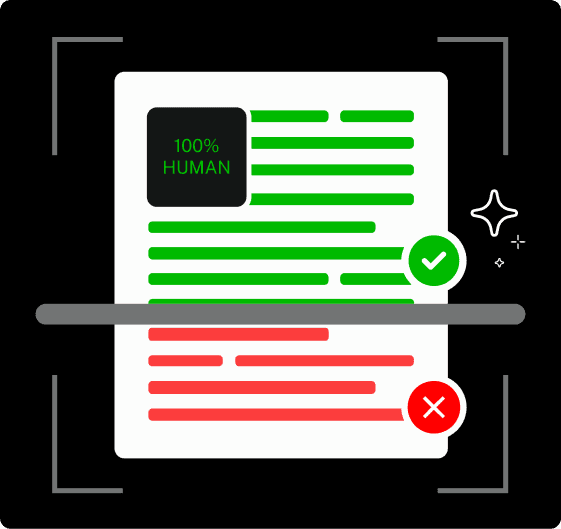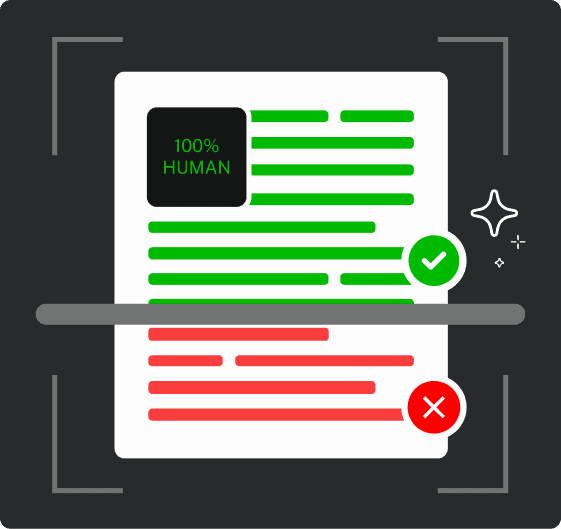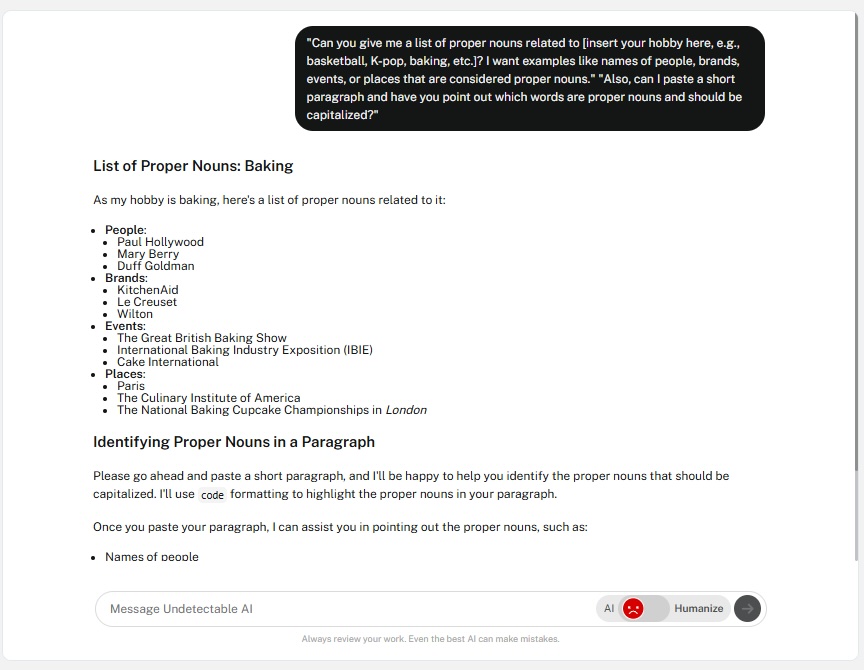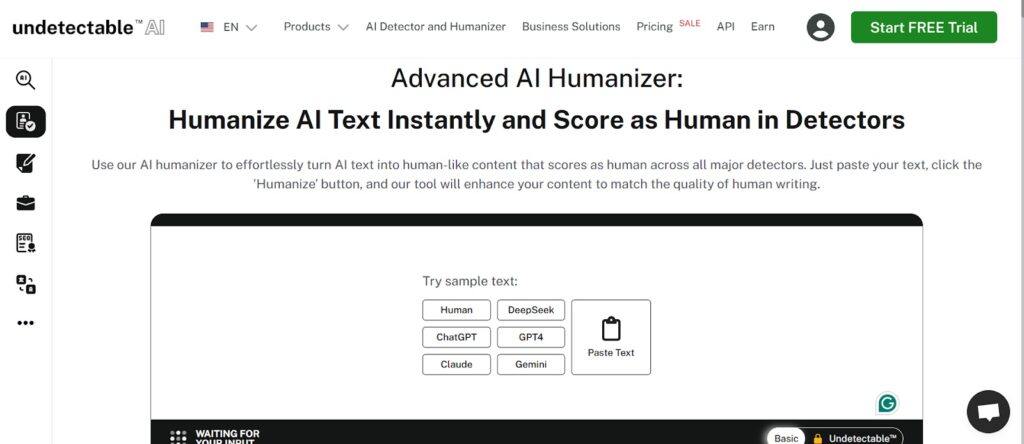Engaging in a conversation without context is a challenge. Add in a few confusing nouns, and it gets even harder. Like in your group chat:
Friend: “I have a meeting with Chase tomorrow to talk about the house.”
You: “Oh, Chase Bank? Which branch?
Friend: “Chase, as in my divorce lawyer.”
See the problem? Chase can be a bank, a person, or the start of a full-blown custody battle.
All are proper nouns and require capitalization, but they are very different things.
That’s why many writers, even the experienced ones, sometimes get tripped up by proper nouns.
Names like Chase, Apple, and Jordan might refer to a person, company, place, or your buddy’s golden retriever. Proper nouns are meant to provide clarity. But without context, they can do the opposite.
These special words follow specific rules that can make or break your writing credibility.
The good news? Once you understand the basics, proper nouns become second nature.
This guide breaks down everything you need to know about proper nouns with no confusing grammar jargon or endless rule lists.
We’ll be looking at practical examples and clear explanations that actually make sense.
Key Takeaways
- Proper nouns name specific people, places, brands, or things, and they always start with a capital letter.
- Context determines if a word like “Apple” or “Chase” is a proper noun or a common noun.
- Using proper nouns makes writing clearer and more precise by identifying exact references.
- Capitalization is required for proper nouns, even in casual writing like texts or social media posts.
- Common mistakes include overcapitalizing generic words or forgetting to capitalize real names and brands.
- Practicing with real examples and tools like Undetectable AI’s Ask AI helps build an instinct for correct usage.
What Is a Proper Noun? (Definition)
A proper noun names a specific person, place, thing, or idea. Unlike common nouns that refer to general categories, proper nouns point to something unique and particular.
Think of it this way: “dog” is a common noun because it could refer to any dog in the world. But “Bella” is a proper noun because it names one specific dog.
This distinction matters because proper nouns always require capitalization, regardless of where they appear in a sentence.


Never Worry About AI Detecting Your Texts Again. Undetectable AI Can Help You:
- Make your AI assisted writing appear human-like.
- Bypass all major AI detection tools with just one click.
- Use AI safely and confidently in school and work.
Proper nouns help us communicate precisely. Instead of saying “I went to a city,” you’d say “I went to Chicago.”
The proper noun eliminates confusion and provides exact information.
Types of Proper Nouns
Nouns in general have different categories, and proper nouns are just one of them.
But within this category, there are different types, each serving a distinct purpose.
- People and Characters: Names of real people, fictional characters, and historical figures all count as proper nouns. This includes first names, last names, nicknames, and titles when used with names. Examples include Shakespeare, Batman, Dr. Smith, and Queen Elizabeth.
- Places and Locations: Geographic locations of all sizes qualify as proper nouns. Countries, cities, states, continents, oceans, mountains, and even specific buildings get the proper noun treatment. Think United States, Tokyo, Mount Everest, or the Empire State Building.
- Organizations and Institutions: Company names, schools, government bodies, and religious organizations are proper nouns. Whether it’s Google, Harvard University, the Supreme Court, or Christianity, these entities have specific identities that demand capitalization.
- Time-Related Proper Nouns: Days of the week, months, holidays, and historical events are proper nouns. Monday, December, Christmas, and World War II all fit this category because they name specific time periods or events.
- Brands and Products: Commercial brands and their products become proper nouns. Coca-Cola, iPhone, Nike, and PlayStation represent specific companies or products that distinguish themselves from generic alternatives.
- Cultural and Creative Works: Books, movies, songs, artworks, and other creative works are proper nouns when you use their specific titles. The Great Gatsby, Star Wars, and the Mona Lisa all qualify because they name particular creative works.
Common Noun vs Proper Noun: What’s the Difference?
The distinction between common and proper nouns revolves around specificity and capitalization.
Common nouns refer to general categories, while proper nouns identify specific instances within those categories.
Consider these pairs: “musician” versus “Taylor Swift,” “smartphone” versus “iPhone,” or “university” versus “Stanford.”
The first set in each word pairing describes a category. The second names a specific example within that category.
This difference affects how we write them. Common nouns only get capitalized when they start a sentence or appear in a title.
Proper nouns always require capitalization, whether they’re at the beginning, middle, or end of a sentence.
The context sometimes determines whether a word functions as a common or proper noun.
“Dad” becomes a proper noun when you use it as a name (“Hi, Dad!”) but stays common when you use it descriptively (“My dad works late”).
Understanding this flexibility helps you make correct capitalization choices in tricky situations.
When in doubt, ask yourself: “Am I referring to a specific person, place, or thing, or am I talking about a general category?”
Examples of Proper Nouns in Everyday Language
Proper nouns surround us in daily communication. Social media posts, text messages, emails, and casual conversations are packed with them.
Your morning routine probably involves multiple proper nouns.
You might check Instagram, grab a Starbucks coffee, and listen to Spotify while driving down Main Street to your job at Microsoft.
Each capitalized word represents a specific entity that distinguishes itself from generic alternatives.
Pop culture constantly creates new proper nouns. TV shows like Stranger Things, video games like Fortnite, and social media platforms like TikTok become part of our vocabulary.
These entertainment properties earn proper noun status because they name specific creative works or platforms.
Want to practice with examples that interest you?
Undetectable AI’s Chat tool can generate themed lists of proper nouns based on your hobbies or interests.
Whether you’re into gaming, cooking, sports, or music, you can request specific examples that make learning more engaging.

For instance, ask for proper nouns related to your favorite genre of music, and you’ll get artist names, album titles, record labels, and venue names.
This personalized approach makes grammar practice feel less like homework and more like exploring topics you already enjoy.
The AI Chat can also help you identify proper nouns in whatever you’re currently writing. Paste a paragraph and ask which words should be capitalized.
This real-time feedback accelerates your learning and builds confidence in your grammar decisions.
Capitalization Rules for Proper Nouns
Proper noun capitalization follows consistent rules, but some situations create confusion.
Once you pick up on these patterns, you eliminate the guesswork and make your writing look polished.
- Basic Capitalization: Every proper noun starts with a capital letter, regardless of its position in a sentence. This rule applies whether the proper noun appears at the beginning, middle, or end of your sentence. “I visited Paris last summer” and “Last summer’s trip to Paris was amazing” both correctly capitalize the city name.
- Multiple Word Proper Nouns: When proper nouns contain multiple words, capitalize the first letter of each significant word. Articles, prepositions, and conjunctions usually stay lowercase unless the proper noun starts with them. “University of California” capitalizes the main words but keeps “of” lowercase.
- Titles and Names: Professional titles become part of proper nouns when they precede a person’s name. “President Biden” capitalizes both words because they function as a single proper noun. However, “the president” remains lowercase when used generically.
- Acronyms and Initialisms: Organizations often use acronyms that follow special capitalization rules. NASA, FBI, and UCLA capitalize every letter because they represent the initials of longer proper nouns. Some organizations use mixed capitalization in their official names, like eBay or iPhone, and you should respect their preferred styling.
- Geographic Features: Rivers, mountains, and other geographic features combine common and proper elements. “Mississippi River” capitalizes both words because “Mississippi” specifies which river. However, “the river” alone doesn’t require capitalization unless it starts a sentence.
- Adjectives from Proper Nouns: Words derived from proper nouns sometimes keep their capitalization. “American” comes from “America” and stays capitalized. But some derived words lose their capital letters over time. “French fries” keeps the capital because it directly references France, while “sandwich” has lost its connection to the Earl of Sandwich.
Proper Nouns in Sentences: Practice and Tips
Spotting proper nouns in sentences becomes easier with practice.
Start by identifying words that name specific people, places, things, or ideas, then verify they’re capitalized correctly.
The first step is training your brain to notice names, not just of people, but of specific places, organizations, brands, and even days of the week.
Once you learn to identify words that refer to unique things, checking if they’re properly capitalized becomes second nature.
A great way to sharpen this skill is by reading anything (a novel, a news article, even a social media post) and mentally circling the proper nouns.
Ask yourself why each one counts as a proper noun. News stories are especially helpful because they’re packed with locations, company names, and public figures, all of which are examples of them.
Another method is rewriting your own sentences.
Take something generic like “I bought coffee at a shop” and swap in specific names, such as “I bought coffee at Starbucks.”
This simple exercise helps show how proper nouns inject clarity and detail into your writing.
It also helps to look at context. The same word might shift from common to proper depending on how it’s used.
“School starts Monday” uses “school” as a common noun and “Monday” as a proper one. But in “I attend Lincoln High School,” that same word becomes part of a proper noun phrase.
If you want deeper practice with smarter feedback, Undetectable AI’s Ask AI tool can review your writing in real time.
Just paste a paragraph, and it will highlight your proper nouns, flag missing capitalizations, and explain what needs fixing.
The result is personalized guidance that actually sticks.

If you’re working with AI-generated content that needs a human touch, Undetectable AI’s Humanizer can help ensure your proper nouns feel natural and contextually appropriate.
The tool refines AI writing to match human patterns while maintaining grammatically correct proper noun usage.
Common Mistakes With Proper Nouns
Even seasoned writers slip up with proper nouns. It’s not always about knowing the rule.
Sometimes it’s about catching the context. Let’s look at a few of the most common mistakes and how they actually show up in real writing.
Overcapitalization
This usually happens when a word feels important, so you give it the capital treatment even when grammar disagrees. Take seasons, for example.
You might write: “I can’t wait for Winter.”
Unless you’re headed to the Winter Olympics or writing a Game of Thrones spin-off, it should be lowercase.
The same goes for job titles. Write Professor Lewis if you’re using it as part of a name, but the professor when it’s just a role.
Undercapitalization
This one’s sneaky. You casually text, “met obama once at the airport,” and suddenly it sounds like you bumped into a regular guy named Barry, not the 44th President of the United States.
Names of people, cities, brands, and planets (yes, even Mars) all deserve their capital letters, no matter how informal the setting is.
Inconsistent Brand Styling
Now let’s talk aesthetics. Brands love to stylize, and they’re not always grammar-friendly.
Is it iPhone or IPhone? Should you write eBay in the middle of a sentence that starts with a lowercase letter?
Technically, yes.
Grammar purists may flinch, but style guides generally recommend honoring a brand’s chosen formatting. That means iPad, YouTube, and yes, eBay, even if it makes your sentence look strange.
Titles: Capital or not?
This one messes with people’s heads because both versions sound right. But context matters.
You’d write President Lincoln when it’s formal.
But say the president when it’s not tied to a specific name.
Think of it like a VIP pass. Titles get capitalized only when they’re escorting a name through the sentence.
Family Words That Flip
“Thanks, Dad” and “my dad is hilarious” use the same word, but follow different rules. If you’re using the word as a name, it’s a proper noun.
If you’re just describing the relationship, keep it lowercase. Your family won’t notice, but your grammar checker definitely will.
Historical Period Confusion
Proper nouns also apply to history, but only when the time period has an official title.
You’d capitalize the Great Depression or World War II, but not ancient times or the dark ages unless you’re referencing a textbook-defined era.
Ready to see the difference? Launch our AI Detector and Humanizer in the widget below!
FAQs
Are days of the week proper nouns?
Yes, days of the week are proper nouns and always require capitalization. Monday, Tuesday, Wednesday, and all other days name specific parts of the weekly cycle.
The same rule applies to months of the year. However, seasons like spring, summer, fall, and winter are common nouns unless they’re part of a proper noun phrase.
What’s the rule for book or movie titles?
Book and movie titles are proper nouns that follow title case capitalization. Capitalize the first word, last word, and all major words in between.
Articles (a, an, the), short prepositions (of, in, on), and coordinating conjunctions (and, but, or) stay lowercase unless they’re the first or last word.
Examples include “The Lord of the Rings” and “Gone with the Wind.”
Are languages and nationalities proper nouns?
Yes, languages and nationalities are always proper nouns. English, Spanish, French, American, Canadian, and Japanese all require capitalization.
This rule applies whether you’re referring to the language itself, the people, or adjectives describing something from that place.
“I speak Italian” and “She bought a German car” both correctly capitalize the nationality-based words.
Can a proper noun be plural?
Absolutely. Proper nouns can be plural when you’re referring to multiple instances of the same specific thing.
“The Johnsons” refers to the Johnson family, “the Rocky Mountains” names a specific mountain range, and “both Koreas” refers to North and South Korea.
The proper noun rules still apply, so these plural forms require capitalization.
Now You Know What’s Proper
Proper nouns aren’t just grammar rules to memorize.
They’re tools that make your writing clearer, more specific, and more engaging.
When you master proper noun usage, your writing gains precision and credibility.
The key is understanding the difference between general categories and specific instances.
Once you recognize this distinction, capitalization decisions become logical rather than arbitrary.
Practice with real examples from your daily life, and proper noun usage will become automatic.
Remember that grammar doesn’t have to be perfect immediately. Focus on recognizing proper nouns first, then work on consistent capitalization.
With time and practice, these rules become second nature, and your writing becomes more polished and professional.
And if you’re working with AI-generated content, social captions, blog drafts, or even emails, Undetectable AI’s tools can help you spot proper nouns instantly, fix missed capitalizations, and make your writing feel more natural, confident, and—well—human.
